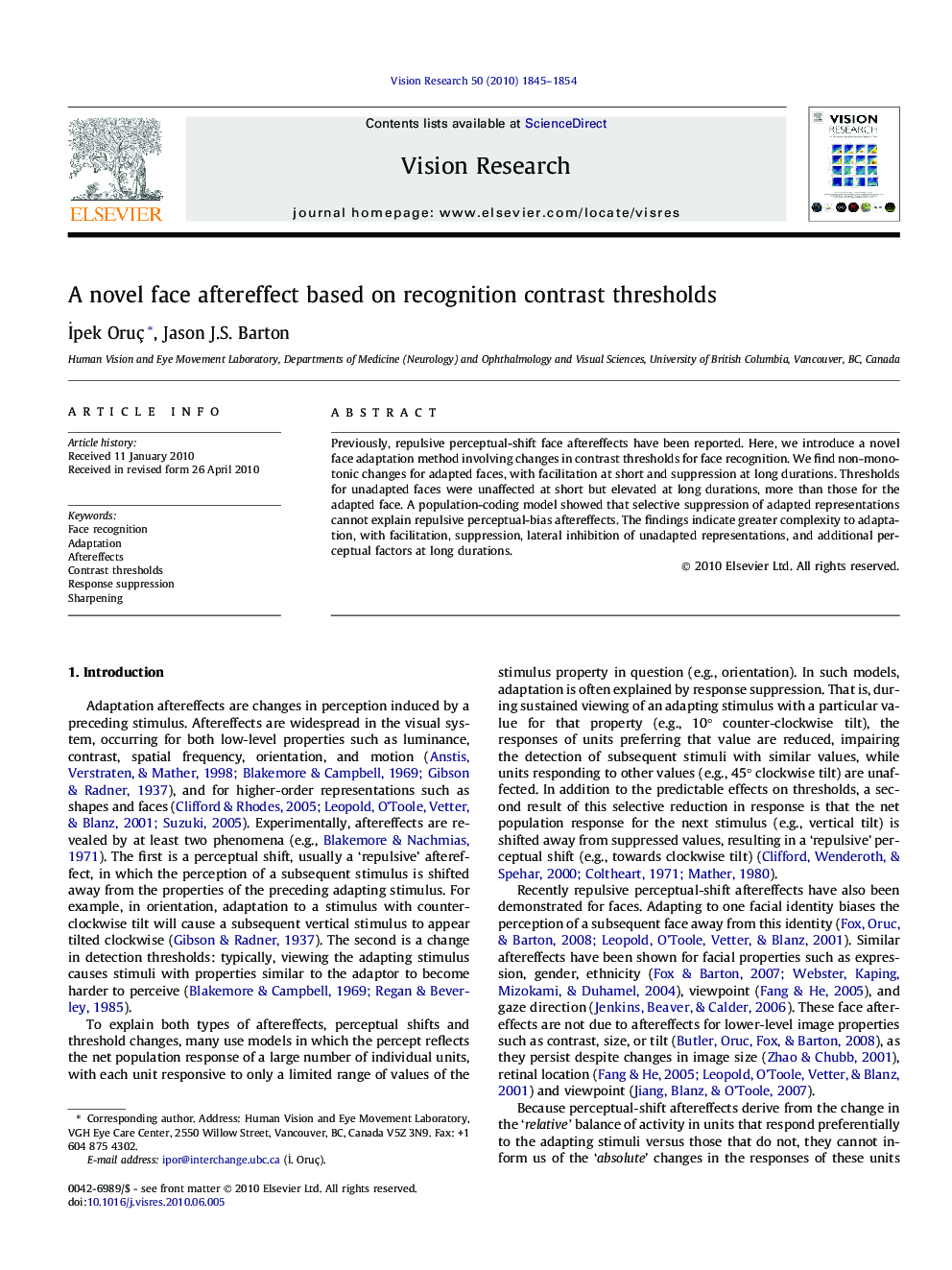| Article ID | Journal | Published Year | Pages | File Type |
|---|---|---|---|---|
| 4034556 | Vision Research | 2010 | 10 Pages |
Previously, repulsive perceptual-shift face aftereffects have been reported. Here, we introduce a novel face adaptation method involving changes in contrast thresholds for face recognition. We find non-monotonic changes for adapted faces, with facilitation at short and suppression at long durations. Thresholds for unadapted faces were unaffected at short but elevated at long durations, more than those for the adapted face. A population-coding model showed that selective suppression of adapted representations cannot explain repulsive perceptual-bias aftereffects. The findings indicate greater complexity to adaptation, with facilitation, suppression, lateral inhibition of unadapted representations, and additional perceptual factors at long durations.
